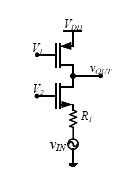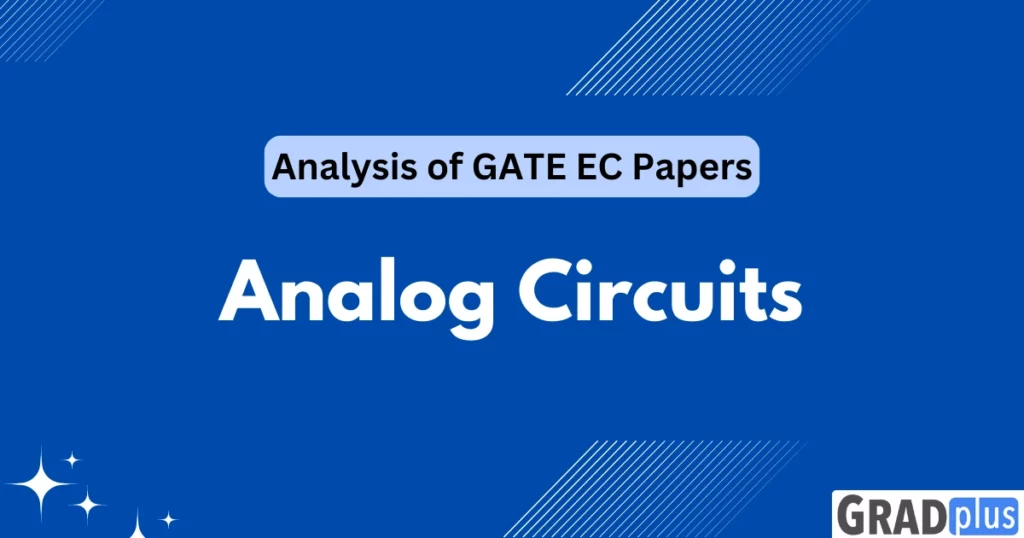Aspiring engineers who are preparing for the Graduate Aptitude Test in Engineering (GATE) understand the significance of thorough preparation and comprehensive study resources.
Through a meticulous examination of previous years’ question papers, we aim to provide you with valuable insights, key trends, and effective strategies to excel in Analog Circuits for your GATE exam.
GATE EC Syllabus for the Subject Analog Circuits
Diode Circuits: clipping, clamping and rectifiers.
BJT and MOSFET Amplifiers: biasing, ac coupling, small signal analysis, frequency response.
Current mirrors and differential amplifiers.
Op-amp Circuits: Amplifiers, summers, differentiators, integrators, active filters, Schmitt triggers and oscillators.
Analysis of Previous GATE Papers for Analog Circuits
| Year | Percentage of Marks |
|---|---|
| 2023 | 12% |
| 2022 | 10 % |
| 2021 | 7 % |
| 2020 | 10 % |
| 2019 | 12 % |
| 2018 | 8 % |
| 2017 | 9% |
| 2016 | 9% |
| 2015 | 8 % |
| 2014 | 9 % |
| 2013 | 15 % |
Recent GATE Paper Questions of Analog Circuits
The following questions have been asked from Analog Circuits , in GATE-EC 2023 Paper.
Q. In the circuit shown below, VI and V2 are bias voltages. Based on input and output impedances, the circuit behaves as a

a) voltage controlled voltage source.
b) voltage controlled current source.
c) current controlled voltage source.
d) current controlled current source
Q. 2 A cascade of common-source amplifiers in a unity gain feedback configuration oscillates when
a) the closed loop gain is less than 1 and the phase shift is less than 180°.
b) the closed loop gain is greater than 1 and the phase shift is less than 180°.
c) the closed loop gain is less than 1 and the phase shift is greater than 180°.
d) the closed loop gain is greater than 1 and the phase shift is greater than 180°.
Q.3. The \frac{V_{out}}{V_{in }} of the circuit shown below is ,

a) -\frac{R_{4}}{R_{3}}
b) \frac{R_{4}}{R_{3}}
c) 1+\frac{R_{4}}{R_{3}}
d) 1-\frac{R_{4}}{R_{3}}
GATE Paper Solutions for Analog Circuits
Last 25+ years GATE Papers with Authentic Solutions


